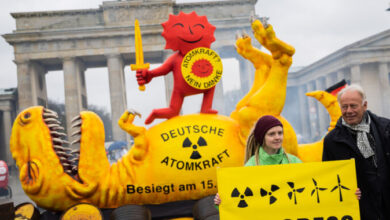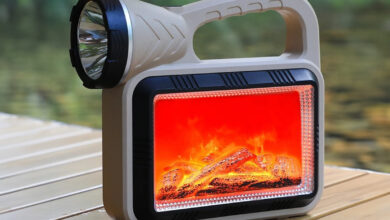How thermal batteries are heating up energy storage

We need heat to make everything from steel bars to ketchup packets. Today, a whopping 20% of global energy demand goes to producing heat used in industry, and most of that heat is generated by burning fossil fuels. In an effort to clean up industry, a growing number of companies are working to supply that heat with a technology called thermal batteries.
It’s such an exciting idea that MIT Technology Review readers have officially selected thermal batteries as the reader’s choice addition to our 2024 list of 10 Breakthrough Technologies. So here’s a closer look at what all the excitement is about.
Storing energy as heat isn’t a new idea—steelmakers have been capturing waste heat and using it to reduce fuel demand for nearly 200 years. But a changing grid and advancing technology have ratcheted up interest in the field. “This is a hot area,” says Jeffrey Rissman, senior director of industry at Energy Innovation, an energy and climate policy and research firm.
Renewable energy sources like wind and solar have seen prices fall dramatically in the past decade. However, these power sources are inconsistent, subject to daily and seasonal patterns. So with the rise in cheap renewable energy has come a parallel push to find ways to store it for applications that require a consistent power source.
Thermal energy storage could connect cheap but intermittent renewable electricity with heat-hungry industrial processes. These systems can transform electricity into heat and then, like typical batteries, store the energy and dispatch it as needed.
Rondo Energy is one of the companies working to produce and deploy thermal batteries. The company’s heat storage system relies on a resistance heater, which transforms electricity into heat using the same method as a space heater or toaster—but on a larger scale, and reaching a much higher temperature. That heat is then used to warm up carefully engineered and arranged stacks of bricks, which store the heat for later use. Air blown over the hot bricks can then be used to generate steam, or delivered directly to heat up equipment.
By using common materials and designing equipment that can work with existing facilities, Rondo is working to show that its technology can integrate into a sector where cost is key. “We’re proving this is economical right now,” says John O’Donnell, the company’s CEO.
Rondo has been running its first commercial pilot at an ethanol plant in California since March 2023. The company is also scaling up, manufacturing equipment in a factory in Taiwan that it’s already announced plans to expand.
A recently announced project with the beverage company Diageo will see Rondo’s heat batteries installed in a Kentucky whiskey distillery where Bulleit bourbon is made, along with one of Diageo’s other facilities. In March, the project got a boost from the US Department of Energy, which selected it to receive $75 million in funding as part of a larger push to clean up industrial emissions.
Rondo is far from the only contender in the thermal battery space, which now includes companies using everything from molten salt and metal to crushed-up rocks to store heat.
Electrified Thermal Solutions is building thermal batteries that use thermally conductive bricks as both a heating element and a storage medium. Running an electrical current through the bricks generates heat, without the need for any separate component. Antora Power similarly uses its carbon-based blocks to both generate and store heat. The company is also aiming to turn that heat back into electricity using thermophotovoltaic technology.
While many companies want to install their storage solutions in industrial facilities, delivering heat, electricity, or both, some are aiming to offer grid-based energy storage to utilities. Malta, which spun out from X (formerly Google X) in 2018, is building technology that will take in electricity, store the energy as heat in a molten-salt system, and then re-generate electricity for use on the grid.
Brenmiller Energy is among the most experienced players in thermal energy storage. The company, founded in 2011, makes modular systems that use crushed rocks to store heat. Its technology is currently operating at several facilities, including a beverage maker and a hospital.
To make a dent in industrial emissions, companies building thermal energy storage systems need to scale quickly. They’ll also need to convince customers to sign on for a new method of generating heat, a potentially difficult task in industries that can be conservative, says Doron Brenmiller, the company’s chief business officer.With industrial heat demand expected to continue growing this decade, there’s an urgent need to find cleaner options. Thermal batteries could be a key strategy for keeping factories running as efforts to cut their emissions warm up.


